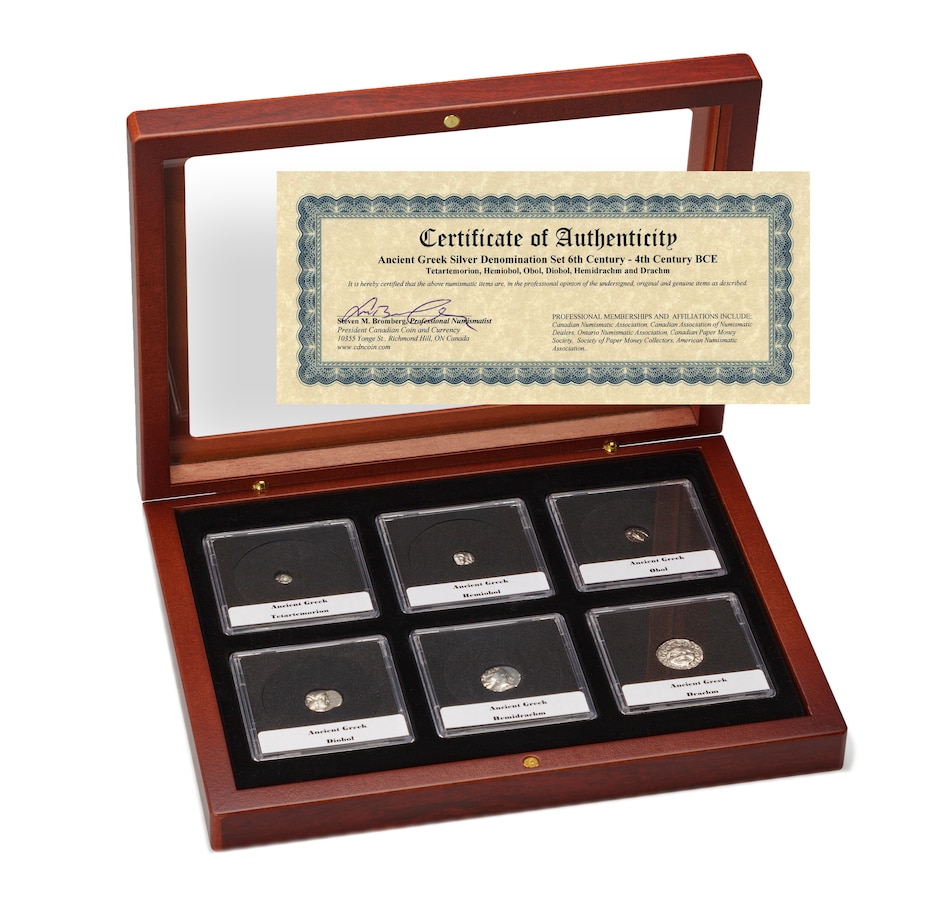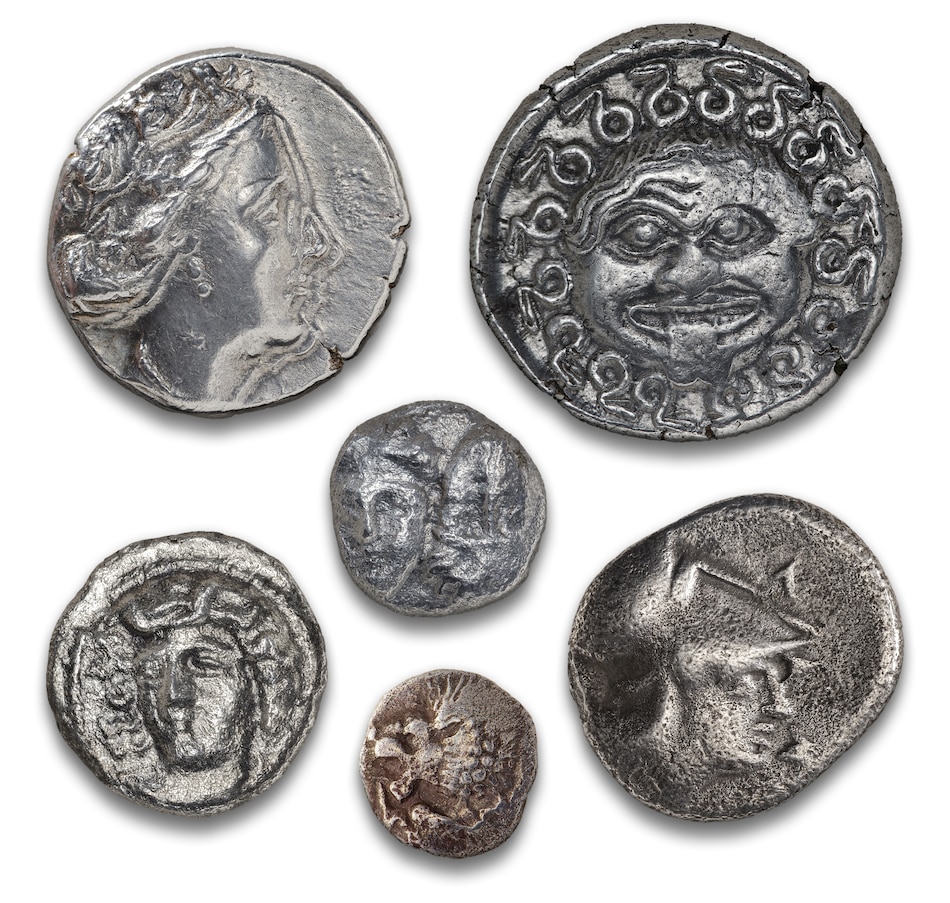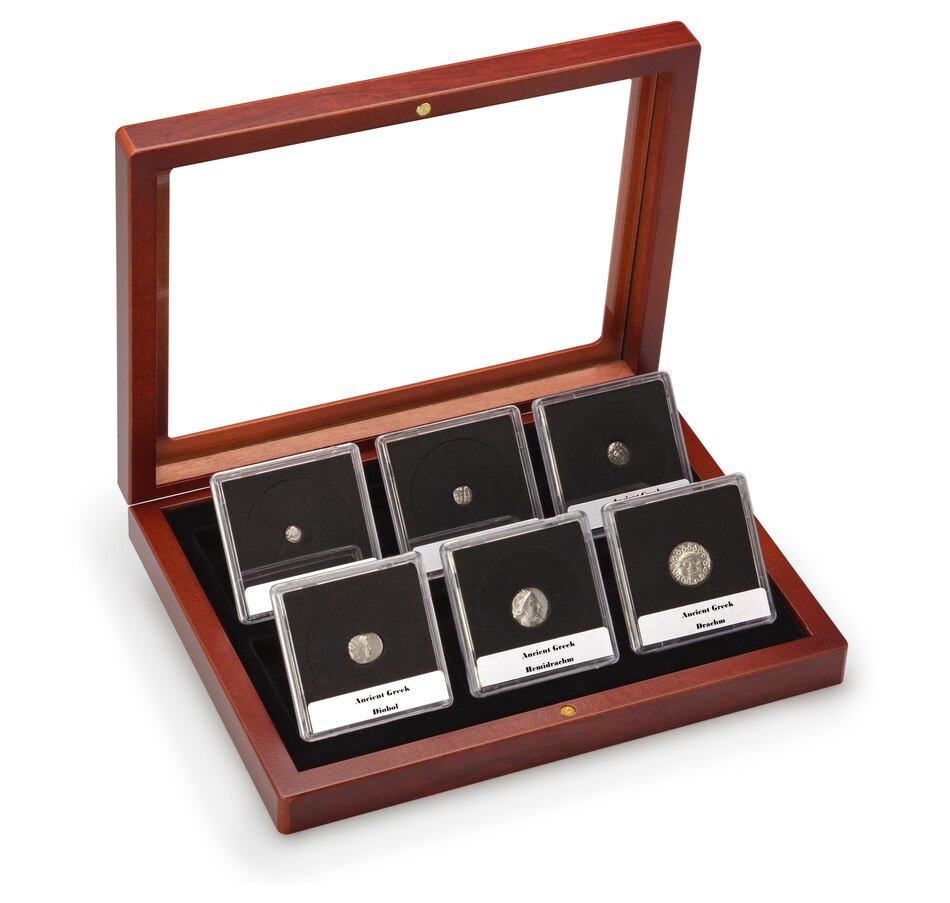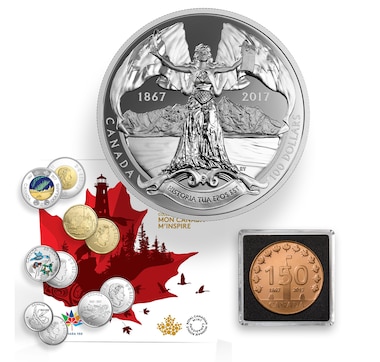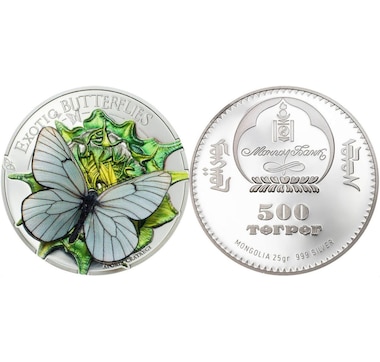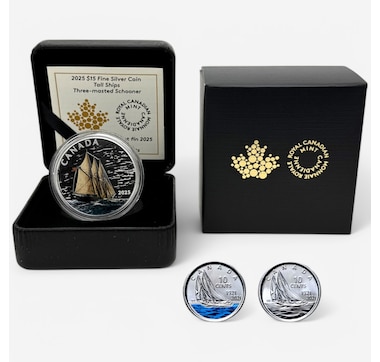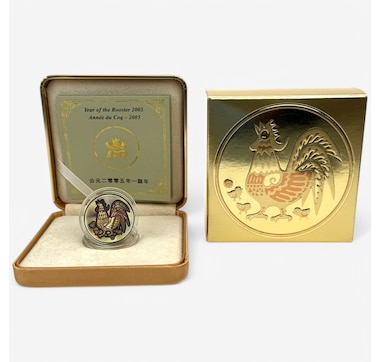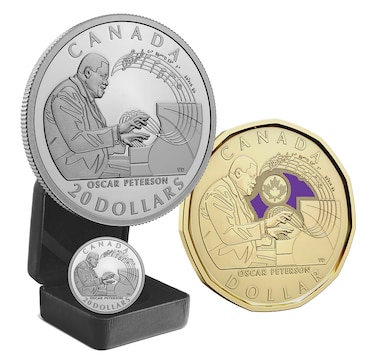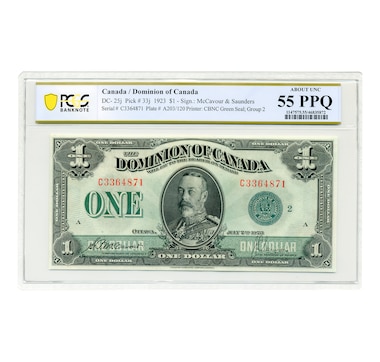Ancient Greek Silver Six-Piece Denomination Collection, 6th to 4th Century BCE
The six coins come presented in a mahogany finish glass top display case, together with a certificate of authenticity and a book about the history of ancient coins.
Unlike modern machine-made coins, all ancient Greek coins were handmade. The design for the obverse was carved into a block of bronze or possibly iron (die). The design of the reverse was carved into a similar punch. A blank disk of gold, silver or electrum was cast in a mould and then placed between the two. The punch would then be struck hard with a hammer, raising the design on both sides of the coin. Gods and figures from Greek mythology were especially popular on Greek coins, but all manner of subjects were chosen to represent particular cities. Strangely, the reverse side of early coins usually had only a simple geometric shape stamped into them, especially a quartered square. Later, minters and administrators saw that the reverse side was an opportunity to double the visual message.
Denominations included:
• The tetartemorion's name means "quarter part," from tetarton, meaning a "fourth," and morion meaning "part" or "portion"; it has a value of one-quarter obol
• The hemiobol comes from the Greek hemisus meaning "half," and has the value of two tetartemorions
• The obol is one-sixth the value of a drachma (or four tetartemorions)
• The diobol comes from the Greek word di, which means "two," "twice," or "double," and has the value of two obols
• The hemidrachm comes from the Greek hemisus meaning "half," and has the value of three obols, or half a drachm
• The drachm's name derives from the Greek verb meaning "to grasp," and has the value of six obols
Includes:
• Six-Piece Set of Ancient Greek Silver Coins



